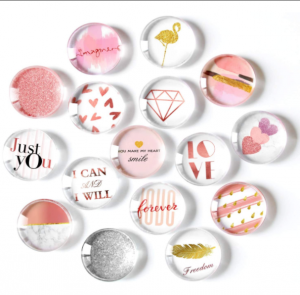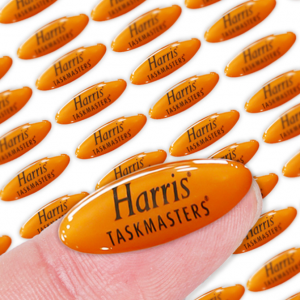(1) Iron the fabric flat, put the bronzing paste on the screen printing plate, scrape it with glue, and print the bronzing sticker and bronzing paste on the surface of the object (such as cloth, clothing, etc.). ), After the bronzing paste is dried, at a temperature of 130~140℃, turn the bronzing sticker back to the surface of the cloth at a pressure of 4kg/cm²; if it exceeds 10”, take it out, and tear off the waste film after cooling.
(2)Flat ironing of leather products. The main tool is aluminum or bronzing sticker copper bronzing board, which is suitable for bronzing leather products. The pressure is smaller than cloth hot stamping, and the hot stamping time is shorter than cloth hot stamping, which can be flexibly controlled according to different products.
(3) Ribbon products are popular. Common tools: Silicone wheels, mostly used for hot stamping stickers on trademark ribbons.
(4) Cloth products are very hot, and are often used for bronzing of whole rolls of cloth fabrics. According to the bronzing effect, the varieties are divided into very hot and ordinary hot. The types of hot stamping stickers are: full transfer film, semi-transfer film and so on. Colors are: monochrome film, multi-color film, etc.
In addition, there is a difference between self-adhesive and self-adhesive on the back of the hot stamping sticker. Hot stamping paper with glue is common in leather hot stamping (that is, hot-melt glue coated on the back). Adhesive-free hot stamping stickers are generally used for fabric hot stamping, because in the actual production process, the operation is flexible. Of course, some specific patterns are coated with hot stamping stickers-hot stamping glue, such as positioning foil. Hot stamping stickers-hot stamping glue can also be divided into water-based glue and oil-based glue, which can be used according to different materials. Do not wipe the bronzing surface or rub the cloth with your hands after hot stamping. It is recommended to do a washing test after 24 hours for the best results. In addition, hot stamping paper must be protected from sunlight, rain or moisture during transportation and storage. Hot stamping stickers-After arriving at the factory, hot stamping paper must be stored in a cool, ventilated and dry place.
1. First understand the base material of the product. The hot stamping substrate determines the series of hot stamping stickers. Commonly used plastic substrates that require bronzing are ABS, PP, PE, PVC (soft and hard), PC, PS, PU, TPR, TPU, steel, nylon, bakelite, etc.; there are also paper (including coated paper, plain paper) , Coated paper, etc.), wood (whether painted or log), leather, clothing printing, etc.
2. The difference between using hot stamping process and using hot stamping plate. Flat heat; according to the different heat plates, there are metal plates and rubber plates.
3. The size of the bronzing area. Mainly due to the different tightness of the release layer of the hot stamping sticker, the size of the hot stamping area is also very important for choosing a hot stamping sticker. Hot stamping stickers can generally be divided into small print hot stamping, small and medium-sized color blocks, large area color blocks and full-area hot stamping.
4. The hot stamping speed is different. Whether to use a fully automatic high-speed machine (the high-speed machine here is not a so-called pneumatic automatic machine, but is actually a semi-automatic machine), semi-automatic machine, manual machine, etc.
5. The choice of brightness and color. Only when the above six conditions are met, the brightness and color of the bronzing sticker can be finally selected. Generally speaking, the brightness of anodized aluminum is higher than that of powder foil, and the brightness of anodized chromium is higher than that of anodized aluminum. The brightness of thick hot stamping stickers is better than that of thin hot stamping stickers.
6. Hot stamping requirements. Whether to reprint after bronzing (including machine printing, oil spraying, etc.)
7. Hot stamping stickers indoor products or outdoor products. Hot stamping requirements for indoor products such as cosmetics are also very high.








